Fivetran is a popular data movement platform used to aggregate data into a warehouse and transform it for analysis and operational use. It's a powerful solution—but not without its flaws and limitations.
As teams scale, many encounter rising costs associated with active row volume, rigid transformation dependencies, and limited support for niche marketing channels. Others need more flexibility, transparency, or hands-on control than Fivetran's model allows.If you’ve hit these roadblocks or are still evaluating your options, this guide breaks down the top Fivetran alternatives. If you’ve hit these roadblocks or are still evaluating your options, this guide breaks down the top Fivetran alternatives. We’ll cover core ETL capabilities, marketing-specific connectors, ease of use, transformation options, and how each alternative addresses the most common gaps.. We’ll cover core ETL capabilities, marketing-specific connectors, ease of use, transformation options, and how each alternative addresses the most common gaps.
Fivetran Overview
Fivetran is a fully managed cloud ELT platform or a data management platform. Fivetran’s pipeline is known for being robust and scalable, handling large volumes and incremental updates.
- Data connectors: Fivetran offers a vast library of over 700 pre-built connectors spanning multiple domains.
- Data transformation: Fivetran integrates with dbt (Data Build Tool), an open-source SQL transformation framework. Fivetran allows you to schedule dbt models to run after data is loaded and even provides a UI for scheduling and monitoring those transforms.
- Data loading: Fivetran is designed to load data into cloud data warehouses and lakes. It supports all the big names: Snowflake, Google BigQuery, Amazon Redshift, Azure Synapse, etc. It can also load data into data lake storage, such as Amazon S3, Google Cloud Storage, or Azure Blob.
Fivetran does not offer any native reporting or dashboarding. It’s a pure data pipeline service. It’s essential to note that Fivetran is designed to be a component of a modern data stack rather than an end-to-end platform.
Fivetran Pricing

Fivetran employs a usage-based pricing model centered around Monthly Active Rows (MAR). The more your data changes, the more you pay.
The platform offers several pricing tiers that provide MAR allowances and different features, for example, frequency of data sync, integration for dbt, and others.
Why Enterprises Look Beyond Fivetran.
Enterprises often seek alternatives to Fivetran due to various technical, financial, and operational reasons. Below are the most common ones.
1. Limited support for niche or proprietary data sources
While Fivetran supports many popular data sources, its coverage for niche, regional, or custom-built tools is limited.
In terms of marketing sources, Fivetran’s site lists around 90 marketing-specific data sources, including Google Ads, Facebook Ads, LinkedIn Ads, Twitter Ads, Google Analytics, HubSpot, Salesforce, Marketo, Mailchimp, Shopify, and so on.
2. No direct output to spreadsheets or BI tools
Fivetran does not output directly to spreadsheets or BI tools; instead, you connect those tools to the warehouse. The positive is that since the data is in a warehouse in a standard format, any BI tool can be connected.
3. High cost at scale
Fivetran’s pricing model is based on Monthly Active Rows (MAR), which can become expensive as data volume scales. As current customers note, this system also lacks transparency and auditability.
Enterprises, especially agencies handling multiple client datasets, often experience unpredictable cost spikes, particularly with high-frequency syncs or wide tables.
On top of that, for advanced data transformations, Fivetran relies on dbt, which is a separate tool.
While dbt offers a free, open-source version, many businesses require dbt Cloud for scheduling, collaboration, and role-based access, which adds an additional subscription cost.
The need to manage two separate platforms (and sometimes two vendor contracts) also increases operational overhead and complexity. As a result, what starts as a streamlined ELT setup can turn into a costly, multi-tool stack.
Sum up of Fivetran cons
- Fivetran is primarily designed for raw data replication, it doesn’t provide a built-in environment for data analysis or extensive pre-load transformation. It expects you to do that in your warehouse.
- Pricing is unpredictable and scales quickly with data volume.
- No built-in dashboards or analytics—external BI tools are required.
- No pre-load transformation support, all modeling must happen post-load. Marketing teams often need to, for example, map campaign IDs to names, or combine data from multiple platforms – with Fivetran, you must do that later in SQL or via dbt.
- Limited flexibility for marketers or non-technical teams.
- Custom connector requests are only considered if there’s broad demand. While Function connector requires code for unsupported sources.
Best Fivetran Alternatives
The good news is that if Fivetran doesn’t meet your company’s data-integration needs, there are several alternatives to consider. Read on as we delve into the most popular Fivetran alternatives and competitors.
| Criteria | Fivetran | Improvado | Stitch | Adverity | Hevo Data | Airbyte |
|---|---|---|---|---|---|---|
| Primary focus | Fully managed ELT for general use | Marketing ETL and intelligence platform | Basic cloud ETL for general use | Marketing ETL and analytics platform | No-code data pipeline for databases | Open-source/cloud ELT |
| Connectors | 700+ | 500+ | 100+ | 600+ | 150+ | 550+ |
| Customi- zation |
Medium, limited custom connectors | High, custom connectors, data models on request | Medium, via open-source Singer taps | High, custom logic, API integration | Medium, REST API, webhook ingestion | Very high, open source, API, SDKs |
| Transfor- mations |
Via dbt/SQL; no visual UI | Pre-built data models, AI-powered, no-code framework | Must use external tools | No-code transformation layer | Drag-drop UI or SQL/dbt | Via dbt/SQL; basic normalization available |
| Destinations | DWH, databases, lakes | DWH, internal DB, BI tools, files | DWH, databases, S3 | DWH, lakes, BI tools | DWH, databases, some SaaS apps | DWH, lakes, JDBC, vector DBs |
| Reporting / Intelligence | None | Yes – dashboard templates, AI reporting, campaign monitoring solution | None | Yes – native BI with AI-powered insights | None | None |
| Pricing | MAR-based | Custom quote, predictable for large scale | Fixed-tier pricing (row-based) | Custom | Event/row-based tiered pricing | Row/volume-based for Cloud or free OSS |
| Best for | Teams looking for pipelines with minimal effort | Enterprises seeking unified marketing analytics at scale | Small teams with limited budget and basic ETL needs | Marketing teams needing end-to-end reporting | Mid-market teams wanting easy setup | Teams needing high flexibility, or on-prem control |
1. Improvado

By contrast, Improvado is a complete marketing data and intelligence platform. It handles not only the data pipeline but also the preparation of data for marketing analytics, campaign monitoring, and marketing intelligence.
Improvado supports over 500 marketing and sales data sources—significantly more than Fivetran’s marketing-specific count. This includes not only the common platforms Fivetran supports, but also many niche or region-specific marketing tools, such as Walmart Connect, Samsung DSP, and others.
Improvado also supports uploading offline data (like Excel, Google Sheets, email, or FTP/SFTP) and blending it with online data. This allows brands to analyze their TV, offline ads, and other data alongside digital channels.
Improvado also offers built-in transformation capabilities specifically oriented toward marketing use cases. Its no-code transformation framework includes AI mapping, blending, grouping, and joining data, all without code.
Improvado provides multiple pre-built models and dashboards that can be implemented with just a few clicks. These include cross-channel models, paid media analytics, ecommerce models, and others. This simplifies setup and accelerates time to value for marketing teams.
In terms of data destinations, Improvado is quite flexible:
- It can load data into popular warehouses like Snowflake, BigQuery, Redshift, and others, similar to Fivetran.
- It also provides data warehouse management services, which is especially helpful for marketing teams without dedicated IT support.
- Improvado includes native connectors or export options for tools like Tableau, Looker, and Looker Studio.
- You can also extract data via CSV or their API for use with other destinations if needed.
- Marketing Data Governance serves as an automated data quality and campaign monitoring system. It continuously validates data and monitors campaigns across various platforms against pre-defined rules, providing real-time alerts when deviations occur.
- AI Agent enhances data interaction by allowing users to query their marketing data using natural language. This feature translates user questions into SQL queries, providing instant insights without the need for technical expertise. AI Agent supports the creation of customized reports, visualizations, and dashboards, facilitating a more intuitive and efficient data analysis process.
Improvado Pricing
Improvado provides three pricing tiers, ranging in the number of unique rows, data sync frequency, historical data sync, and other features.
- Improvado provides access to all connectors and allows an unlimited number of accounts per data source across all pricing plans.
- Each Improvado package includes customization credits and professional services to tailor the platform to specific business requirements.
Talk to Improvado sales to discuss your data needs and business objectives and get a custom quote.
Improvado Pros
- Improvado is designed to serve marketing operations. It handles metrics, dimensions, and terminology native to marketing use cases.
- It allows users to define custom metrics and normalize data across platforms without SQL.
- Improvado is more than a data pipeline. It aggregates and prepares data for analysis but also automates marketing reporting with dashboard templates, performance monitoring tools, and AI insights.
- Improvado can run marketing intelligence on top of your data warehouse so that no data is moved or replicated outside your environment.
Improvado Cons
- Improvado is focused heavily on marketing and advertising. Not ideal for integrating product usage or operational systems outside of marketing unless combined with another tool.
- The platform doesn't feature an embedded SQL editor or user-executable scripts. If custom logic can't be implemented with no-code transformations, clients can reach out to the Improvado Professional Services team.
2. Stitch
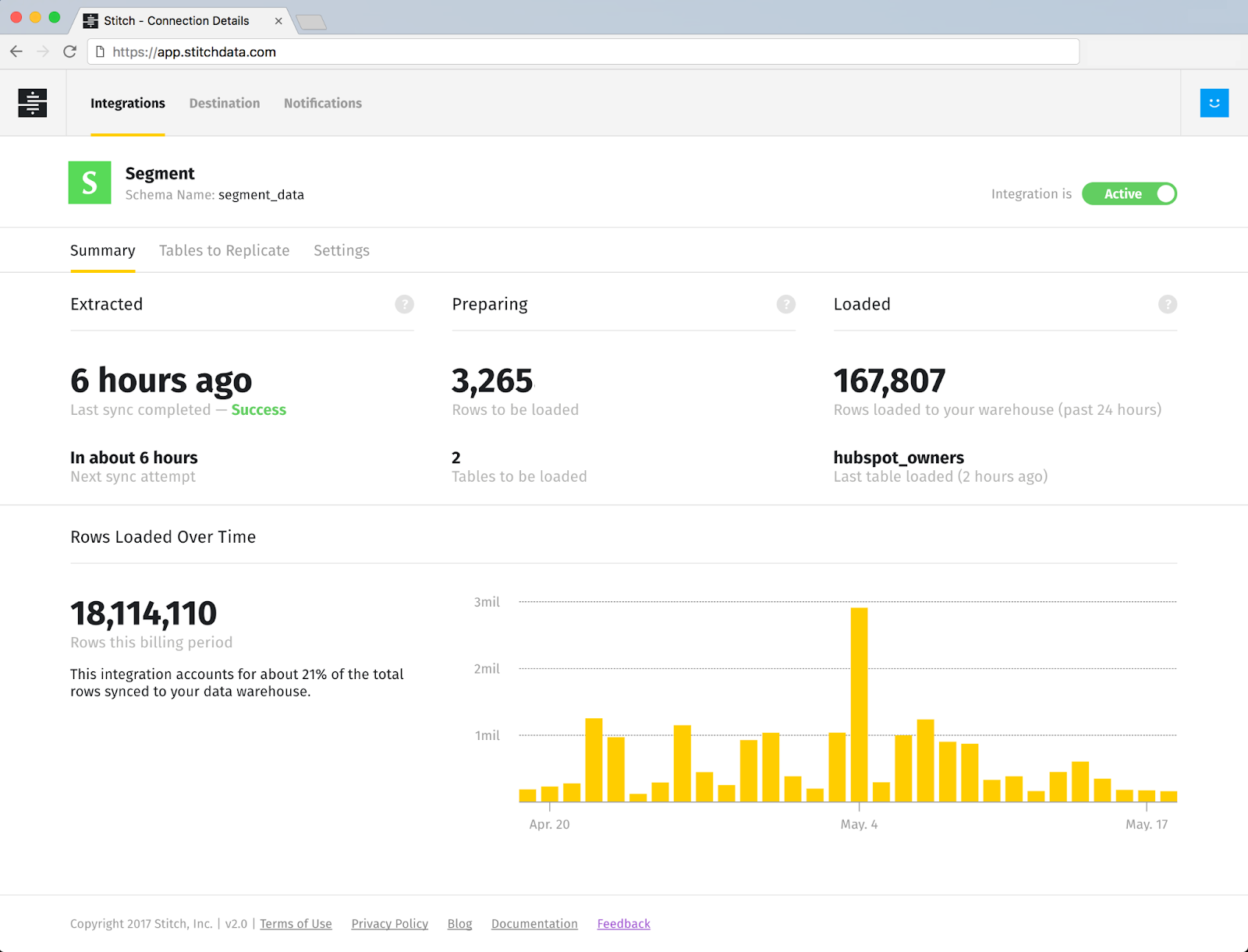
Stitch is a close Fivetran alternative focused on the ETL/ELT pipeline layer rather than providing an end-to-end analytics platform. Stitch (now part of Talend) is a cloud-based ETL service designed for simplicity and cost-effectiveness.
It supports around 100+ sources officially, including common marketing ones like Google Ads, Campaign Manager, or Salesforce, and many more via community-contributed taps. However, compared to Fivetran or Improvado, Stitch has fewer native marketing connectors. The list is smaller, especially for less common services).
Stitch originally advertised itself as “ETL minus the T.” It performs no significant transformations out of the box. The philosophy is to replicate source data as-is. If you need to transform data, you do it after it’s in your warehouse using SQL or a separate tool. Stitch’s parent company, Talend, does offer heavy transformation tools, but those are separate products.
Stitch’s UI is clean and simple, but it’s very barebones. It was designed to be a self-service tool for developers and analysts to set up data replication quickly. For a marketer, using Stitch might be slightly easier than Fivetran initially because of its simplicity, but it has similar challenges. You can click to set up connectors without coding, but once data is flowing to a warehouse, Stitch provides no analytical interface or marketing-specific aids.
Stitch Pricing
Stitch offers a usage-based pricing model. The entry-level Standard plan starts at $100 per month, accommodating up to 5 million rows, and can scale up to 300 million rows per month.
The Advanced and Premium plans provide higher data volume limits, additional destinations, enhanced features, and HIPAA compliance options.
All plans include a 14-day free trial.
Stitch Pros
- Designed for self-service. Great for smaller teams or MVP use cases.
- Supports a wide range of community-built connectors through the Singer framework. Highly extensible for teams with developer resources.
Stitch Cons
- Stitch has no reporting or visualization layer whatsoever. It is purely a data loader.
- Focused on E and L, not ETL. All transformations must be handled downstream (in dbt, SQL, or your data warehouse). Not marketer-friendly.
- Support is email and ticket-based only, with limited assistance on implementation or strategic use cases.
- Fewer prebuilt connectors than Fivetran, Hevo, or Improvado. Many connectors are community-supported and may lack full functionality or reliability.
- The UI is minimal and assumes users understand data engineering basics. Not a good fit for marketers without SQL or BI experience.
3. Adverity

Similar to Improvado, Adverity is a more complete marketing data platform, not just a data pipeline. It helps aggregate, transform, and visualize data in one place.
- Data integration: The platform features an extensive library of over 600 data connectors, covering social, display, programmatic, analytics tools, mobile apps, CRMs, and even “other” categories like finance or weather data, if needed for correlation.
- Data transformation: Adverity provides built-in transformation and data preparation capabilities via a web-based user interface with drag-and-drop workflows. It’s mostly no-code and visual, making it accessible to marketers with some training.
- Data loading: Adverity is flexible with destinations. It can send data to data warehouses, databases, BI tools, or file formats. However, many users leverage its internal storage and analytics capabilities.
Adverity has its own data store, where it retains ingested data and allows you to query and visualize it via its UI. This gives you a choice: you can use Adverity as the endpoint for analysis, never exporting data out, or set up exports to your systems while still using its dashboards.
Adverity also includes default reporting applications and built-in visualization components. Users can drag and drop visualizations, set KPIs, and create interactive charts. Additionally, the platform supports features like alerts and AI-driven insights—for example, it can notify you if a KPI drops or an anomaly is detected.
Adverity Pricing
Adverity offers customized pricing based on factors like specific business needs, the number of data sources, data destinations, and desired features. All new users can begin with a 14-day free trial, which provides access to all Standard plan features but with a limited data row allowance.
Adverity Pros
- The tool is specifically designed for marketing data use cases, offering tailored workflows and metrics for marketing intelligence.
- Adverity supports one of the largest sets of pre-built connectors.
- Adverity provides built-in dashboards and default reporting templates. Enables marketers to analyze data directly in-platform without relying on external business intelligence tools.
Adverity Cons
- The platform is powerful but not immediately intuitive for non-technical users. Initial setup, especially for custom metrics or multi-source harmonization, has a steep learning curve and may require expert support.
- While solid for marketing reporting, Adverity dashboard customization is not as flexible or advanced as dedicated BI tools like Tableau or Looker.
- Customers mention query speed noticeably slows as the data volume grows, affecting productivity when working with historical analysis across multiple marketing channels.
4. Hevo Data

Similar to Stitch, Hevo Data is a Fivetran alternative focused on the ETL/ELT pipeline layer.
Hevo is a general ETL tool and supports 150+ data sources, including many popular marketing tools. Still, it’s fair to say Hevo is oriented toward the most commonly used sources, niche marketing platforms might not be supported.
One notable difference between Fivetran and Hevo Data is Hevo’s inclusion of built-in transformation capabilities, both preload and postload. Hevo offers a drag-and-drop transformation interface and integrates with dbt for users who want to build more advanced transformations.
Like Fivetran and Stitch, Hevo supports numerous destinations, mostly databases and data warehouses. The website also lists some analytics tools as supported destinations. Essentially, Hevo can load data into applications that accept API-based inputs, but its primary use is to load data into a database or warehouse where it can be analyzed with BI tools.
Similar to Fivetran, Hevo focuses on pipelines and does not include a reporting or dashboard layer.
However, in some contexts, Hevo supports Reverse ETL by enabling destination-to-source sync on select connectors, extending its use beyond traditional one-way data flows.
Hevo Data Pricing
Hevo Data employs an event-based pricing model, where costs are determined by the number of data events, such as inserts, updates, or deletions, processed each month.
The platform offers a Free plan, allowing up to 1 million events per month, suitable for small-scale data needs. All plans come with a 14-day free trial, enabling users to assess the platform's suitability before committing.
Hevo Data Pros
- Hevo has a user-friendly drag-and-drop transformation builder.
- The learning curve for Hevo is generally low, users often get up and running in hours.
- Hevo covers popular marketing sources and offers generic connectors, making it a solid middle ground between marketing-specific tools like Improvado and general-purpose platforms like Fivetran.
Hevo Data Cons
- The tool has data volume and performance limitations that can hinder scalability for large datasets.
- When integrating with new tools or adapting to schema changes, users often need to perform manual mappings.
- Hevo's library of connectors is relatively small, especially for less common data sources, which may necessitate custom development or alternative solutions.
- Troubleshooting issues can be difficult due to unclear error messages and a lack of detailed logs.
5. Airbyte
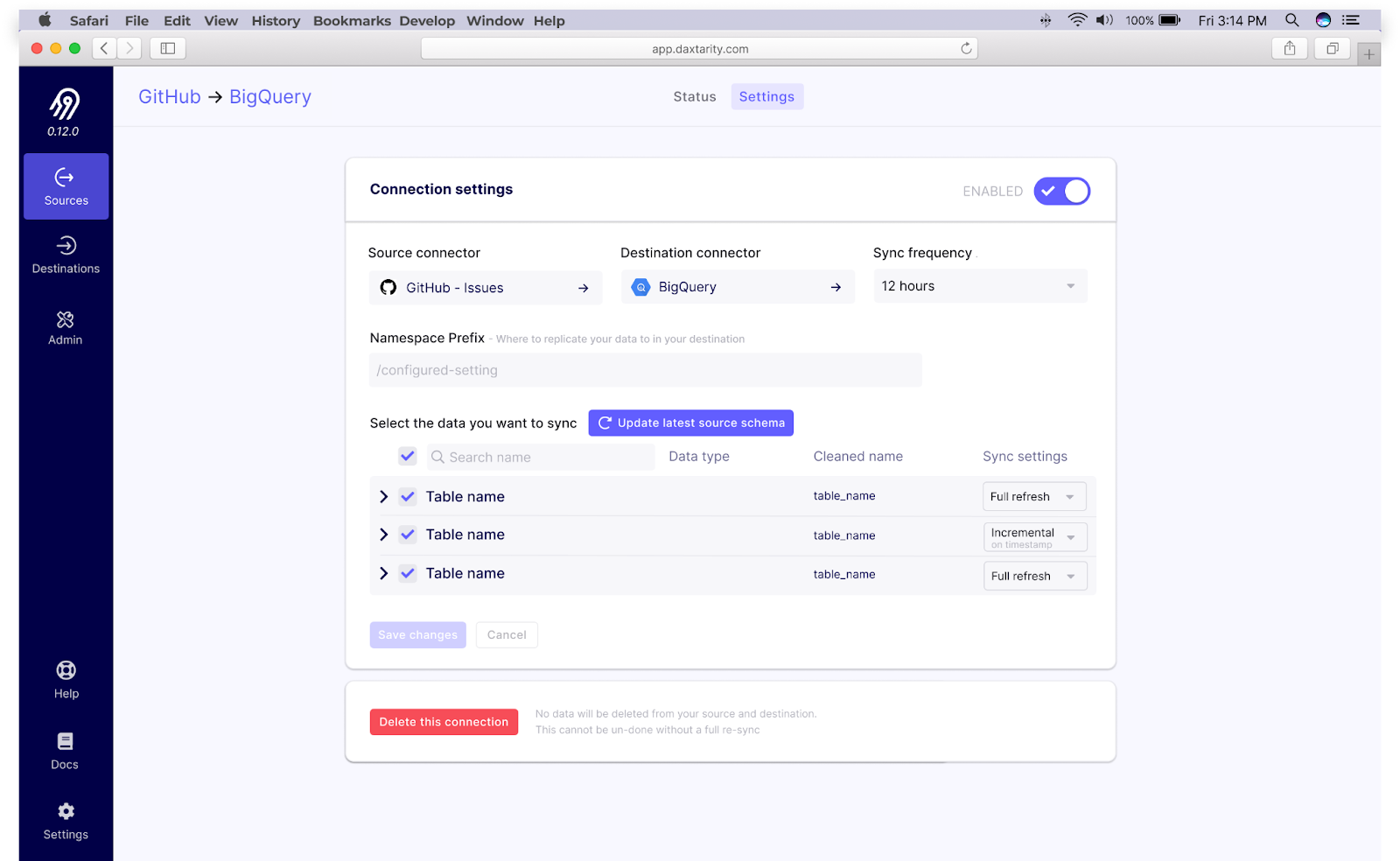
Airbyte is an open-source data integration platform. Similar to Fivetran, its core function is ELT (extract and load), meaning it replicates data from sources to destinations.
Airbyte now lists over 550 connectors in its marketplace, including both official and community-supported options. Users can modify existing connectors or build their own.
Airbyte provides a Normalization feature, which is essentially a post-load transformation using SQL. For more advanced transformations, Airbyte does not offer its own UI or tooling. Instead, it expects you to use dbt or write custom SQL.
Another notable feature is that Airbyte can be self-hosted—you can run an Airbyte server on your own machine or in the cloud. This can be beneficial for organizations in industries where secure data processing, compliance, and infrastructure control are critical.
Airbyte Pricing
Airbyte offers self-hosted and cloud-based deployment options, each with distinct pricing structures:
- The self-hosted version is open-source and free to use. While there are no licensing fees, users are responsible for managing their own hosting environments, which may involve costs related to servers, storage, and maintenance.
- The cloud-based version, known as Airbyte Cloud, is a fully managed service. It operates on a usage-based pricing model, where costs are determined by factors such as data volume and the number of pipelines.
Airbyte Pros
- Airbyte can be deployed on-premises, giving full control over security, compliance, and data residency—ideal for teams with strict governance requirements.
- Lets users create or customize connectors using a low-code builder or SDK, ideal for niche or proprietary sources.
- Volume-based pricing that can be significantly cheaper than Fivetran’s MAR model.
Airbyte Cons
- Airbyte is primarily designed as a data integration tool for engineers and data teams. It lacks marketer-friendly features like pre-built dashboards, report templates, or intuitive UI workflows tailored to campaign performance or attribution.
- Initial setup and ongoing maintenance (updates, scaling, backups) can be complex and time-consuming without dedicated DevOps or data engineering support. Even with Airbyte Cloud, configuring and managing pipelines often requires engineering knowledge.
- Many connectors are in beta/alpha stages and community-maintained. Production reliability may vary depending on the connector and may require debugging.
- Unlike platforms built specifically for marketing, Airbyte doesn't automatically unify naming conventions, campaign structures, or metrics across ad platforms—this must be done manually in a downstream tool.
6. Talend
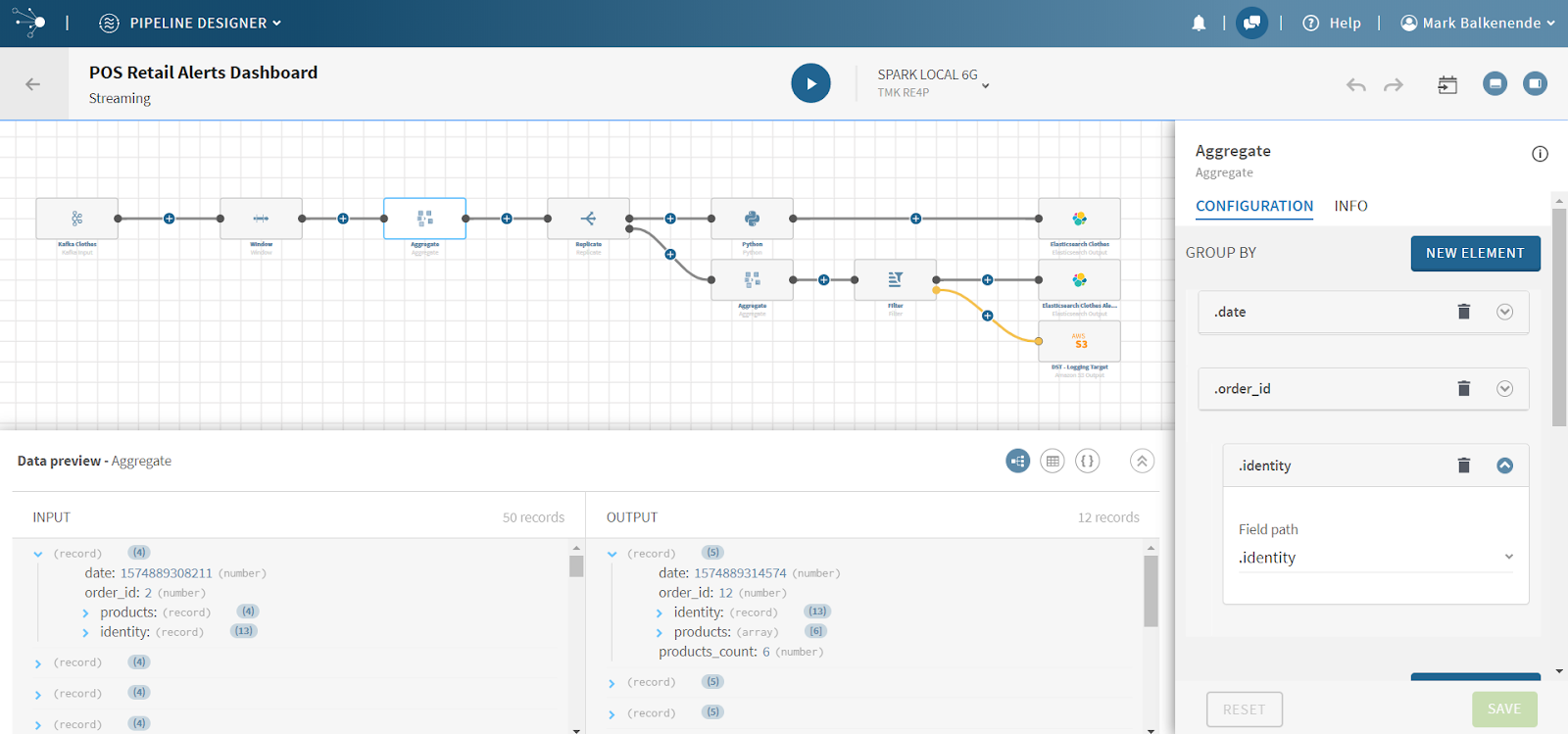
Talend is a comprehensive data integration platform designed for organizations that need deep control over complex, multi-source data workflows. Unlike Fivetran, Talend offers a more hands-on approach, allowing technical teams to build, customize, and manage every layer of the data pipeline.
Talend offers a built-in transformation engine, which doesn’t require external tools like dbt. Teams can use a visual interface to design workflows and implement complex business logic through code when needed.
Talend Pricing
Talend commercial version continues to be actively developed, enhanced, and supported under Qlik’s ownership.
Talend uses a capacity-based pricing model, where costs are determined by the volume of data moved and the complexity of data integration and quality needs.
Talend Pros
- Talend supports over 800 connectors, including popular marketing platforms such as Salesforce, Marketo, and Google Analytics, among many others.
- You can deploy Talend on-premises or in any cloud, which appeals to enterprises with strict IT policies or hybrid cloud strategies.
- Beyond just ELT, Talend offers a unified platform (data integration, API services, data catalog, and master data management), which can reduce the need for multiple tools.
Talend Cons
- Talend has a steeper learning curve and requires more engineering effort to set up and maintain. The platform’s interface and UX are less intuitive compared to other solutions, which can slow adoption for business users.
- For teams that focus exclusively on marketing or campaign analytics, the platform may offer more functionality than is needed, adding unnecessary complexity and overhead.
7. Matillion
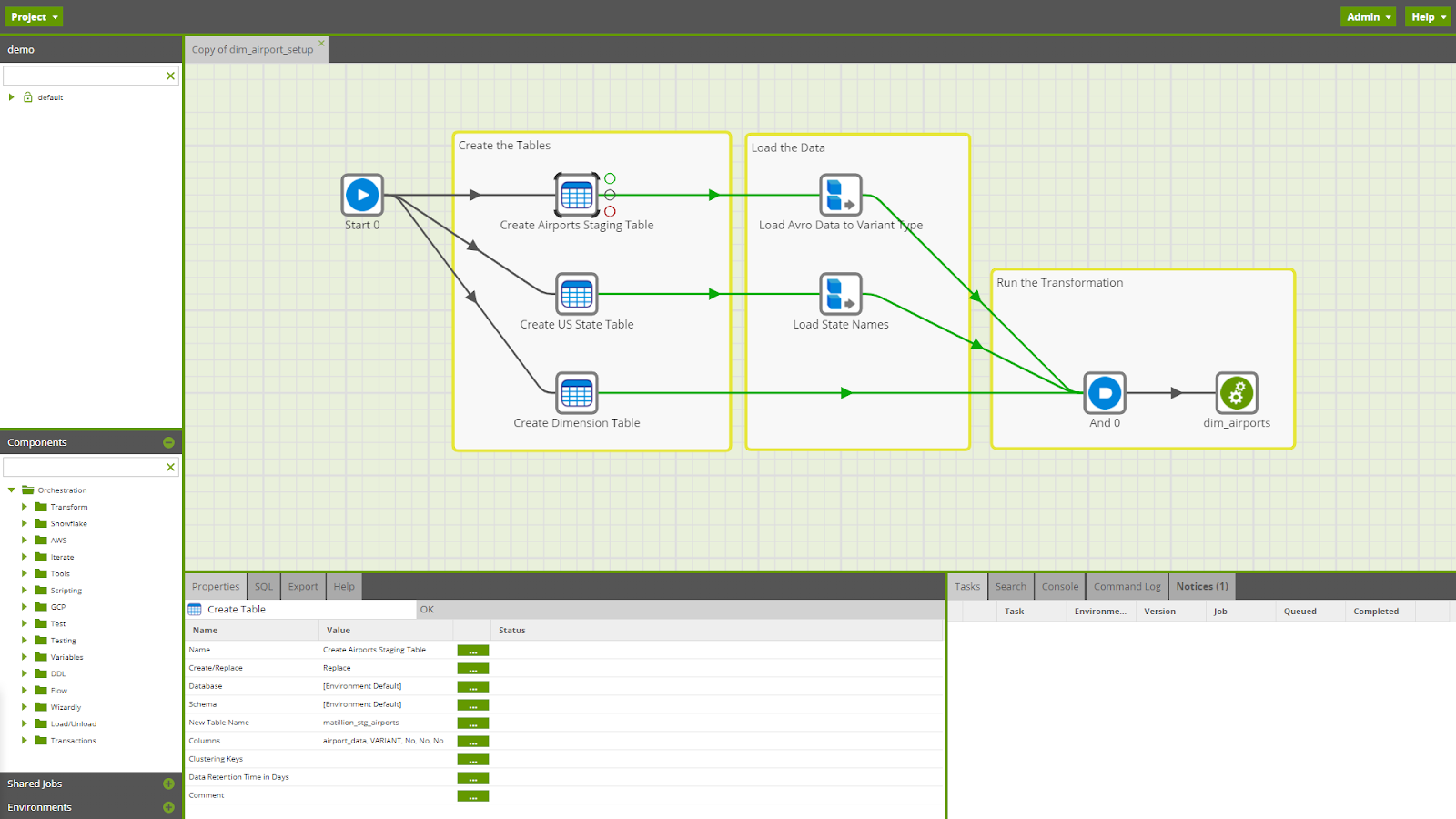
Matillion is a cloud-native data integration and transformation platform designed specifically for modern data warehouses such as Snowflake, Amazon Redshift, Google BigQuery, and Azure Synapse.
While Fivetran focuses on syncing source data to a warehouse, Matillion is more of an end-to-end pipeline tool: you can extract from sources, transform data, and load results all in one tool. It can perform in-warehouse transformations and also orchestrate workflows.
Matillion Pricing

Matillion uses a consumption-based pricing model where customers pay based on the number of virtual core (vCore) hours used. One credit equals one hour of vCore usage, and credits are only consumed when pipelines are actively running.
Essentially, the platform charges based on how much compute power your data workflows use, not by rows processed or number of connectors. Each time a pipeline runs, Matillion spins up a compute instance. The longer and more resource-intensive the job, the more credits are used.
Matillion Pros
- Matillion offers an easy drag-and-drop interface for building data transformation workflows. Analysts and engineers can create pipelines visually without heavy coding.
- Matillion is deployed in the customer’s cloud, so all data processing happens within your controlled environment.
- Matillion supports advanced transformation capabilities, which is helpful in use cases where data may need significant cleaning and merging.
Matillion Cons
- Matillion’s consumption-based pricing in credits can be confusing at first.
- Matillion offers around 150 pre-built connectors, focusing on major databases, cloud storage, and popular SaaS like Salesforce or Google Analytics. This is fewer than Fivetran and other alternatives. If a marketing team relies on very niche or long-tail SaaS data sources, Matillion may require the use of its “universal connector” or writing custom scripts, which adds effort.
- It's less suitable for teams without technical resources or data engineering support.
8. AWS
Amazon Web Services (AWS) offers native tools that, when combined, can serve as a Fivetran alternative, especially for organizations already within the AWS ecosystem.
The two key services are:
- AWS Glue is a fully managed ETL service that lets you run data integration tasks on a serverless Spark platform. Glue is more akin to a coding framework for ETL, giving the flexibility to handle complex transformations, but it requires a technical setup.
- Amazon AppFlow, on the other hand, is a no-code SaaS integration service: it provides pre-built connectors to many SaaS applications (such as Salesforce, Marketo, SAP, Google Analytics, Slack, and others) and allows you to flow data from those apps into AWS services like S3, Redshift, or Snowflake with a few clicks.
AWS Pricing
If you're considering AWS as an alternative to Fivetran, understanding the final price can be challenging.
For AWS Glue, costs are:
- You’re charged per second for the compute resources, or Data processing units (DPUs) used during ETL job runs. More complex or longer-running jobs consume more DPUs.
- Glue also charges for metadata storage and crawler runs, which scan data sources to infer schema.
- Glue Studio includes additional costs for interactive development sessions.
For Amazon AppFlow, costs are:
- You pay per flow execution, with higher costs for larger volumes of data transferred.
- Additional charges apply based on the amount of data moved per flow (typically measured per GB).
Use the AWS Pricing Calculator for more accurate forecasting.
AWS Pros
- For companies already heavily utilizing AWS, these tools integrate seamlessly.
- AWS tools are highly flexible and powerful, offering fine-grained control over performance, cost, and data flow logic.
- Using AWS’s native services means one less vendor relationship to manage. Enterprises might prefer this to avoid lengthy procurement or security reviews for a new vendor.
AWS Cons
- A major limitation is that AWS AppFlow mostly targets AWS destinations. If you need to send data to non-AWS systems such as Google BigQuery, Azure Synapse, or a SaaS BI tool, AppFlow alone won’t do that.
- With AWS, you might need to mix and match services: use AppFlow to extract data, then Glue or EMR to transform it, and so on. This modular approach offers flexibility but also demands more data engineering effort and expertise.
9. Qlik
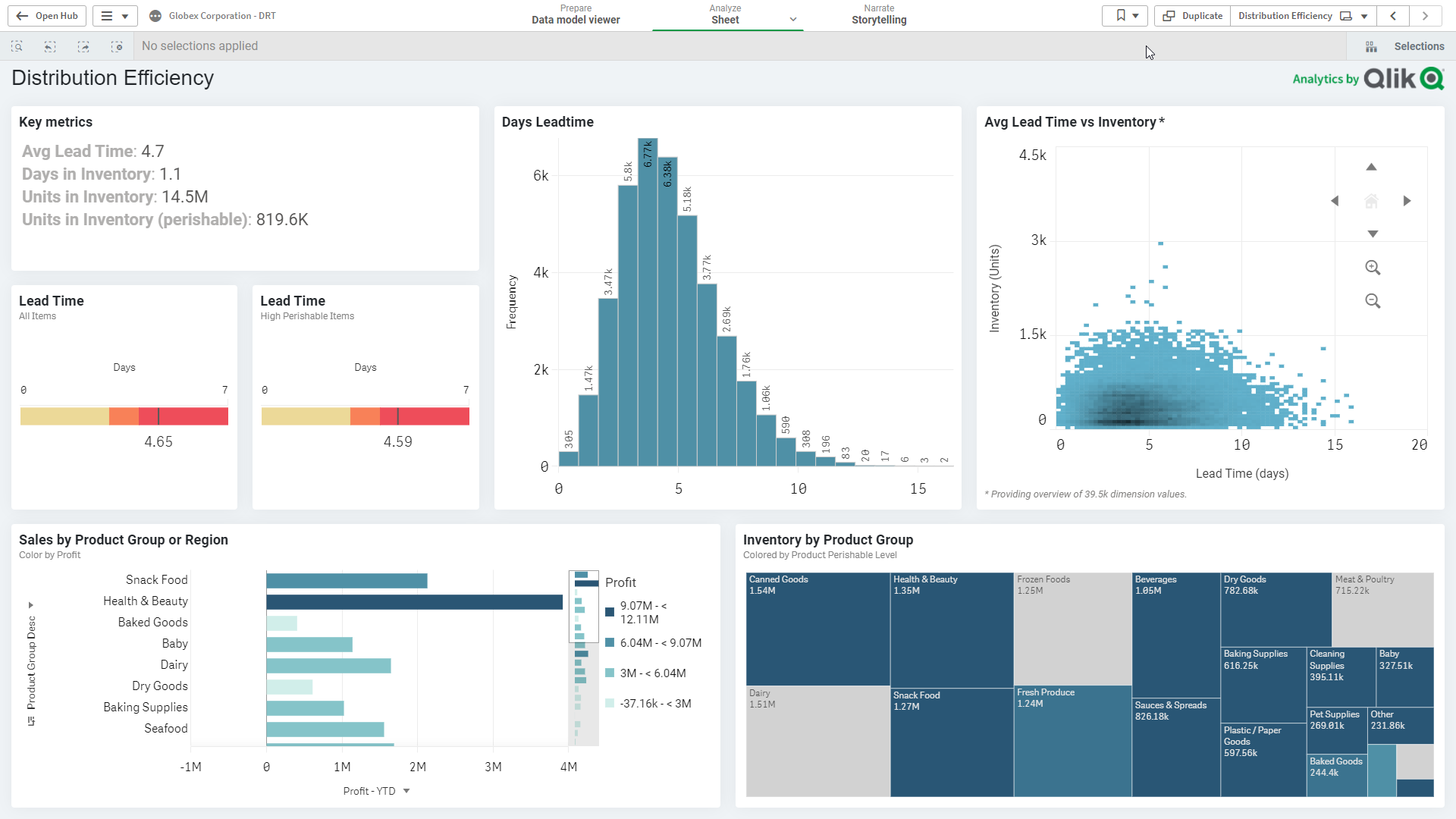
Qlik is a broader platform than Fivetran, offering both data integration and analytics under one roof.
Unlike Fivetran, which focuses strictly on data ingestion through prebuilt connectors, Qlik includes tools for real-time data replication, transformation, and dashboarding. It’s positioned more as a full-stack solution than a plug-and-play pipeline service.
Qlik’s integration layer specializes in Change Data Capture (CDC), which is ideal for syncing data from enterprise databases such as Oracle, SQL Server, SAP, and mainframes. This sets it apart from Fivetran, which is primarily focused on syncing cloud apps. Qlik’s CDC supports low-latency replication, making it particularly useful in scenarios where real-time visibility is essential.
Qlik supports both ETL and ELT, with flexible options for shaping data either before or after loading. You can define transformation logic visually or programmatically, depending on your team’s needs. This offers more depth than Fivetran’s debt-only transformation model but with a steeper learning curve.
Qlik Pricing
Qlik pricing is based primarily on a capacity model, where organizations pay according to the volume of data analyzed, app reloads, and overall usage.
For smaller or more structured deployments, Qlik also offers a user-based licensing option, allowing organizations to purchase subscriptions based on the number of users and their access levels.
Both models support cloud deployment and can be tailored to match the scale and complexity of the organization’s analytics environment.
Qlik Pros
- It can replicate data with near-zero latency, which is crucial for up-to-the-minute dashboards or syncing operational data, such as delivering real-time marketing campaign results or website stats to a BI system.
- Beyond raw data movement, Qlik’s platform automates data refinement, modeling, and cataloging. It can create data warehouse structures, transform raw data into star schemas or other analytics-ready formats, and then catalog them for easy discovery.
Qlik Cons
- Qlik’s integration suite is powerful, but it can be complex to set up and manage. Installing, configuring, and tuning CDC for various sources and designing transformation workflows often require specialized expertise.
- Qlik is generally used for broad data domains, not for specific marketing API data. So, teams might need significant data modeling efforts to make raw data useful.
- Qlik acquired Talend, Attunity, and Podium. The integration of these products is ongoing. Customers may find the product landscape confusing. For example, Qlik now owns Stitch (Talend’s cloud ELT), which overlaps with some of Qlik’s functionality. It’s not always clear which tool to use for a given scenario, potentially leading to the use of multiple overlapping tools.
10. Segment (Twilio Segment)
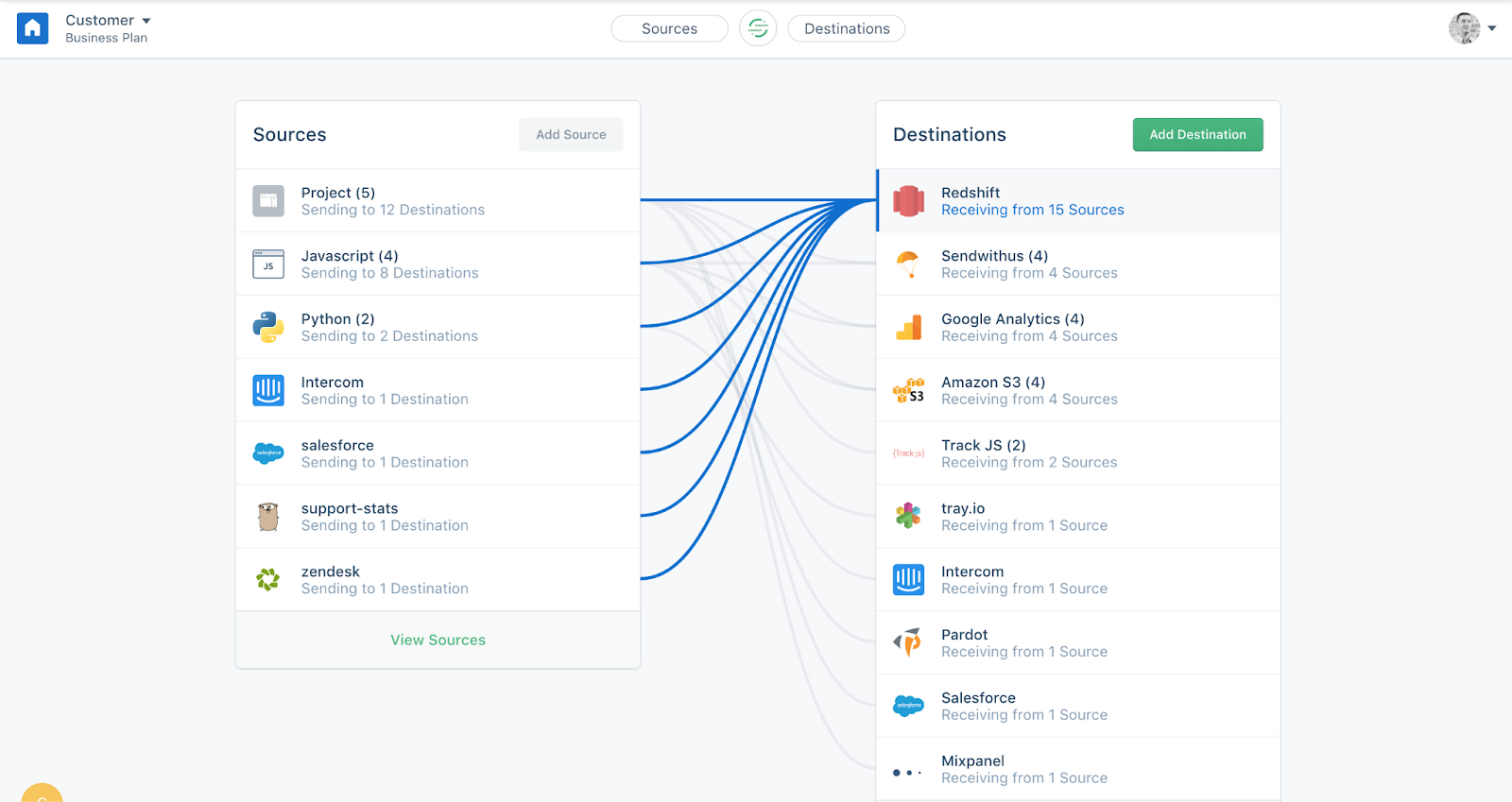
Segment is a Customer Data Platform (CDP) which fundamentally differs from the other platforms on the list.
While Fivetran is an ETL/ELT pipeline tool, Segment focuses on collecting and unifying customer event data, such as clicks, page views, and mobile app events, and routing that data to various destinations.
In practice, Segment provides website and app SDKs to track user actions and also offers connections to many cloud apps. It then standardizes and structures event data at the point of collection, allowing for more precise targeting, personalization, and downstream analytics.
Segment Pricing
Segment offers two main types of plans: Connections and Customer Data Platform (CDP).
- Connections plans let you collect and route customer data from different sources to your analytics and marketing tools. These plans vary based on the number of data sources, destinations, and the volume of data events you process.
- The CDP plans are designed for companies that want to unify customer profiles, build audiences, and orchestrate personalized marketing journeys. CDP pricing is typically based on the number of unified customer profiles you manage and the advanced features you need, such as audience management and journey orchestration.
Both product lines offer add-ons, like advanced data governance, which can affect the final price.
Segment Pros
- It comes with pre-built tracking libraries for websites and mobile apps to capture events such as page views, form submissions, and button clicks with minimal effort.
- Segment operates in real-time: data is streamed to destinations as it’s collected. This enables use cases such as real-time personalization on the website or instant triggering of marketing campaigns when a user takes an action. Fivetran, in contrast, would load data into a warehouse, and you’d act on it late.
- Segment helps build a unified customer database by stitching together identifiers from various platforms (for example, cookies, mobile device IDs, and email addresses). It can aggregate data from your website, mobile app, CRM, support system, and more into one profile per user.
Segment Cons
- Segment is not a full ETL replacement. It isn't designed to bring in all types of data. It doesn’t, for instance, pull entire database tables or large historical datasets. If a company tried to use Segments as its only pipeline tool, it might struggle to ingest things like bulk finance data or do complex transformations.
- Segment is a proprietary platform. If you invest heavily in their Personas/Audiences features, switching later might be difficult as those user profiles and rules live in Segment. Some companies worry about becoming locked into a single vendor for all customer data distribution.
- Segment can do some data processing, but it’s not meant for heavy transformations. If, for example, you wanted to calculate complex metrics or join data streams before landing in a warehouse, Segment won’t do that.
Best Fivetran Alternative for Your Organization
Depending on your organization’s data integration needs, technical expertise, and the complexity of your data sources, there’s a Fivetran alternative that fits.
If your team works heavily with marketing and advertising data, needs customizable data models, and wants to reduce time spent on manual reporting, Improvado is the best option.
Unlike general-purpose ELT tools, Improvado is purpose-built for marketing analytics—offering automated data normalization, campaign-level monitoring, cross-channel performance tracking, and an AI Agent for fast, ad-hoc insights.
To see how Improvado can simplify your reporting and give your marketing team more control over their data, book a demo with our team today.
.png)



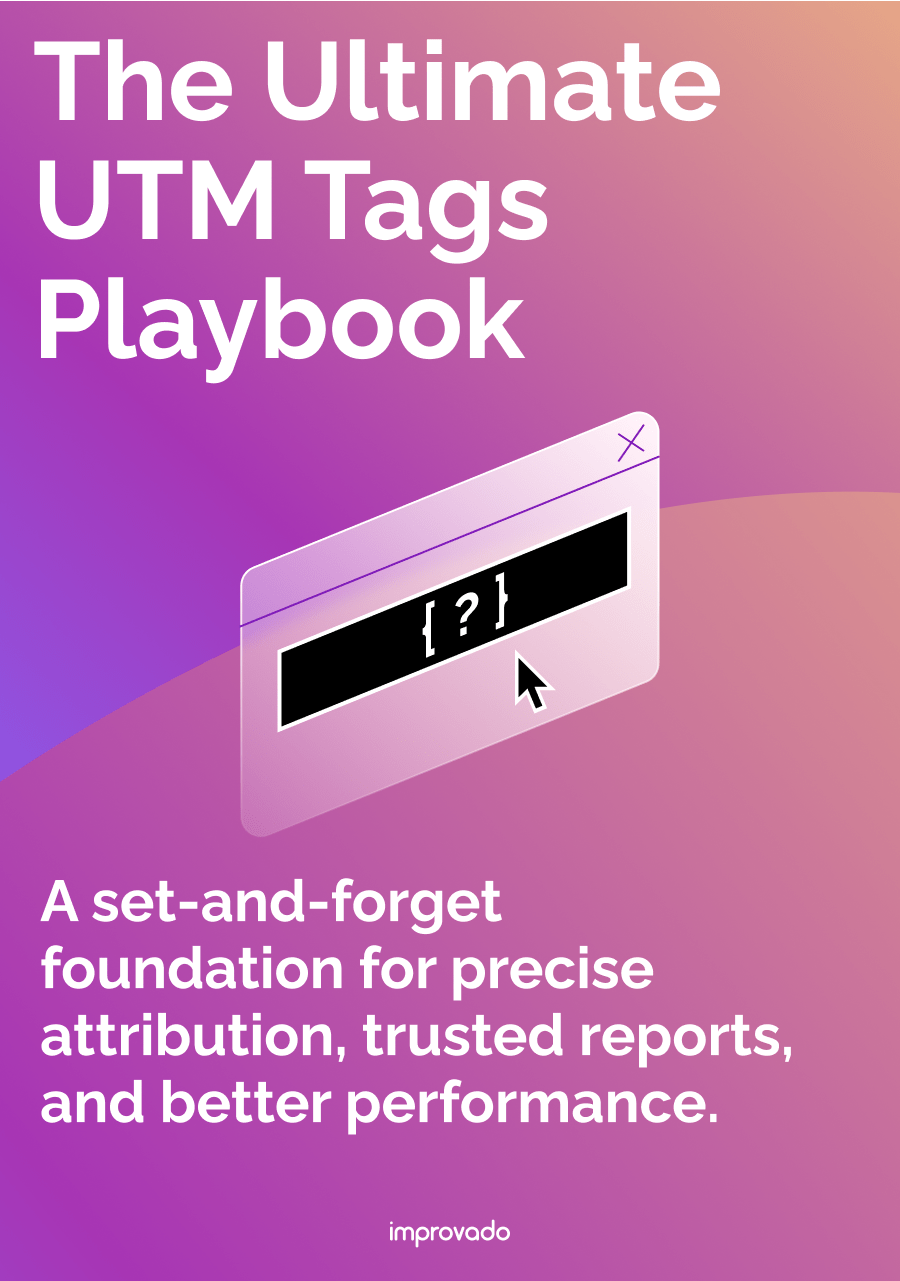
.png)
